One of the best gifts I have ever been given is the book The Artist’s Way by Julia Cameron. One of my college roommates and dearest friends gave it to me as a birthday gift my first year out of college. The book is a 12 week course in discovering and recovering your creative self. It was revolutionary for me. In fact, it is what led me to consider the pivotal role writing had played in my life and wonder how it could continue to play a role in my life. At 23, I had no idea what was coming, but The Artist’s Way is one of the tools that helped me to see possibility and understand that our lives are always being written and formed; we are always evolving.
The book is organized by weekly themes like Recovering a Sense of Identity, Recovering a Sense of Power, Recovering a Sense of Connection. Each week has a handful of exercises that you are to complete and an essay to read. During week 2: Recovering a Sense of Identity, I came across a tool that I have modified over the years to become a central tool in my self-care and self-awareness.
Cameron calls it the Life Pie and here are her instructions: “Draw a circle. Divide it into 6 pieces of a pie. Label one piece spirituality, another exercise, another play, and so on with work, friends, and romance/ adventure. Place a dot in each slice at the degree to which you are fulfilled in that area (outer rim indicates great; inner circle, not so great). Connect the dots. This will show you where you are lopsided. As you begin the course, it is not uncommon for your life pie to look like a tarantula. As recovery progresses, your tarantula may become a mandala. Working with this tool, you will notice that there are areas of your life that feel impoverished and on which you spend little or no time Use the time tidbits you are finding to alter this… even the slightest attention to our impoverished areas can nurture them.”
Over the years, I have modified this tool to what I call The Wheel of Life, and I have created some structure for my understanding of it. Today, I want to share this tool with you as it has been so revolutionary for me; it’s the first tool that I pull out when I am feeling out of balanced or am seeking a check in.
Step 1: Draw your circle, divide it into six pie pieces, and label them as follows:
Personal Growth: The way that you are personally growing and refining each day.
Spirituality: The way that you connect with the world in a way that has larger meaning to you. That might be through a more traditional religious connection or it might be a more alternative connection- -this is about your roots and connection to the world and it’s meaning and should be defined by you.
Health/ Wellbeing: The way that you care for your body, mind, and soul.
Vocation/ Mission: The way that you live your mission in life. It may be that you do this through your actual job or outside of your actual job. My mission, for example, is to help people live authentic and empowered lives and I do that through my jobs- teaching and writing- but also through my volunteer work like Circle de Luz.
Family/ Friends: The way you support and are supported by family and friends as well as the level to which you are enjoying those relations and reaping positive benefits from them.
Fun/ Adventure: The way you are enjoying the world around you in a way that makes sense for you.
You’ll notice these categories are a little different from Cameron’s. For me, these are the six categories that make-up a meaningful, balanced life. Some significant differences are that I don’t have romance explicitly laid out but now that I am married, I would count my fulfillment in my marriage as part of my family/ friends category and when I was single, I counted my satisfaction with my romantic life as part of my fun/ adventure category. I also replaced play with personal growth because making sure that I am challenging myself to be continually growing is very important to me and needed to be in the six categories of a balanced life for me. Then I just added the concept fun to the adventure category.
Here’s how it should look:
Step 2: Imagine that there is a dotted line in each category (but you don’t need to draw this dotted line, the below is just for illustrative purposes) and that dotted line represents the continuum for that category. The central point is 0 and the outer most point is 10.
Now, for each category, rate your degree of fulfillment for each area and put a dot at the appropriate place on the continuum (if you are really fulfilled, maybe it’s getting a dot where the seven would be. If you aren’t fulfilled in that area, maybe you want to put a dot where the one or two would be). Here is how your dots might look when you are done.
Step 3: Connect your dots.
Step 4: Now it is time for some analyzing and goal setting.
First, some frame of reference. For me, I consider a good, balanced life clicking on at about a 6.5-7 in each category. That brings up to interesting points. The first is that I don’t think you can nail a 10 in every single category at all times. Now, granted, that’s just my perspective. But I just think that there is only so much energy in the world and that’s there not enough energy for personal highs in every category every week. I do not at all mean that negatively. In fact, I mean it to give us a break. When we strive for perfection in every category every time, I think what we might really be doing is sliding away from fulfillment and into obsession and rules that aren’t fulfilling. The pursuit of perfection to me is really draining so I’m not going for that. I’m going for more fulfilled than not in every category with peaceful harmonies between them. Does that make sense?
But, there’s a caveat, sometimes you really do need to kick an area up. Let’s say that your Mission is to write a book (about perfectionism let’s say) and you are a month away from your deadline. Likely, you are really going to kick up the energy you are extending in your mission category and, in exchange, you are going to have to dial back your energy in another category (maybe you are going to go out with friends less or dial back your workouts or quit your pleasure reading to instead read past pages). If you did the Wheel of Life during this time, maybe your mission would rank a 10, but something else- your fun/ adventure category, let’s say- is going to take a hit and fall down to a 3. Sometimes in life, you have to make those trade-offs. I think the key, though, is to be in the driver’s seat of those changes, consciously making those decisions rather than realizing months down the road when your health is spiraling out of control that you made a trade-off you weren’t aware of- mission for wellness. I say this from experience as I graded mission for wellness most everyday of three years of teaching high school. Now, I like to ask myself when I need to dial up a category to a 9 or 10 what trade-off I am willing to make so that I don’t discovered it just happened to me later. Hopefully, those thoughts make sense.
With that background in mind, here is what I want you to do. Review your Wheel of Life. Make note of 2 areas where you’d like to make incremental improvements in the next week. Set one goal for each area that is achievable by one week from the day you are doing this exercise. Maybe 1 concrete goal is to go to a yoga class. Maybe another is to cook dinner at home or go to a movie with a friend or go to bed by 10:30 for at least 4 nights. Set your goals by category and write them underneath your Wheel of Life. Now, schedule them in your calendar.
Step 5: Return to your wheel of life one week from today. Review your goals and how you did. And then complete the Wheel of Life exercise again with this past week in mind. Do it in another color and label the weeks so that you can tell them apart. I like to do 4 or 5 weeks on one wheel to see how the wheel’s shape is changing over time. You can do that or do a new wheel each time. Once you are done with your wheel, set your goals for this week.
What do you think? Could this exercise be useful to you? Do you think it is possible to operate at a level of 10 fulfillment in all categories at the same time? What areas do you need to pay more attention to and what sort of goals are you setting for yourself this week? My goal is to get to at least 2 classes at the YMCA.

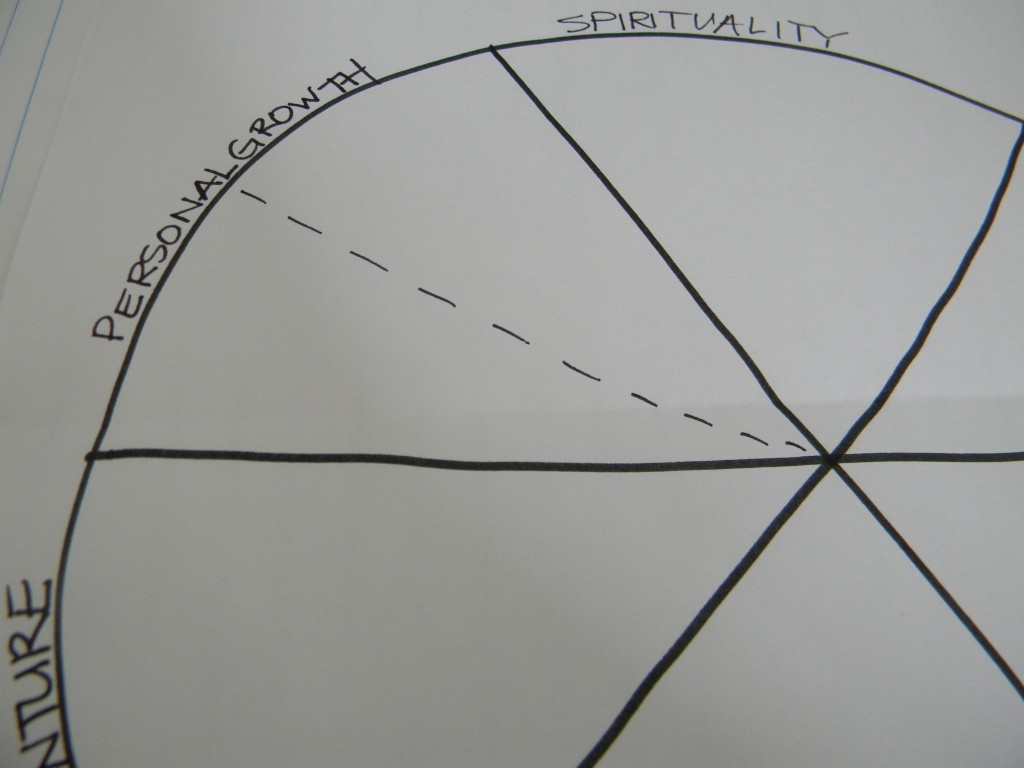
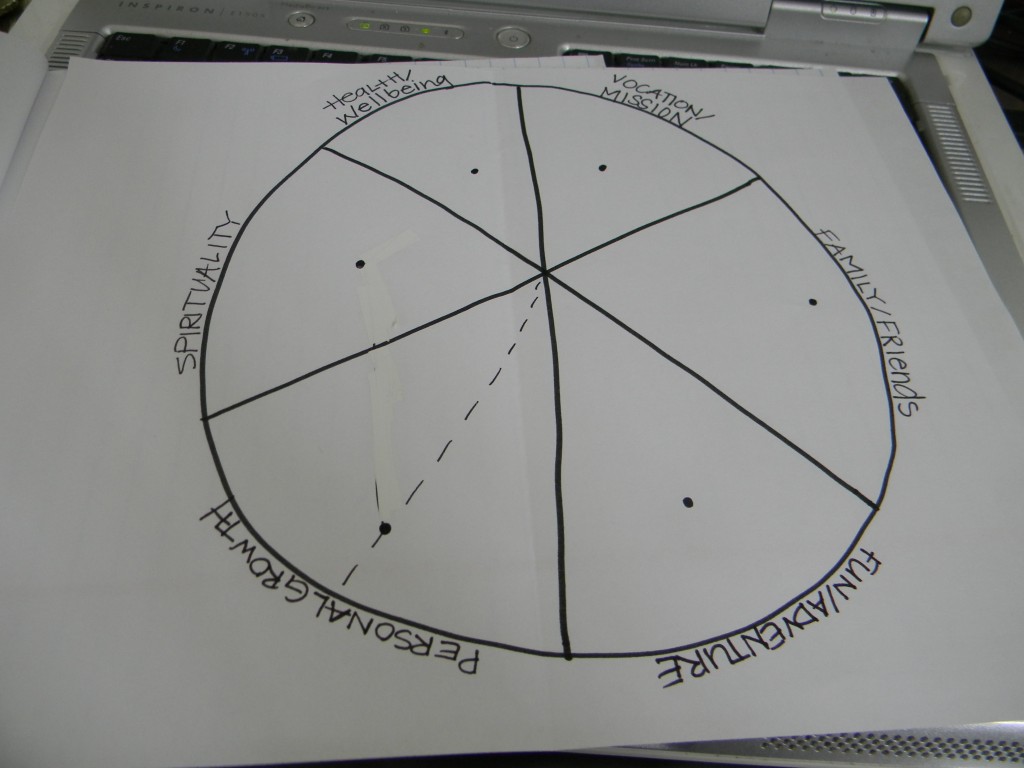
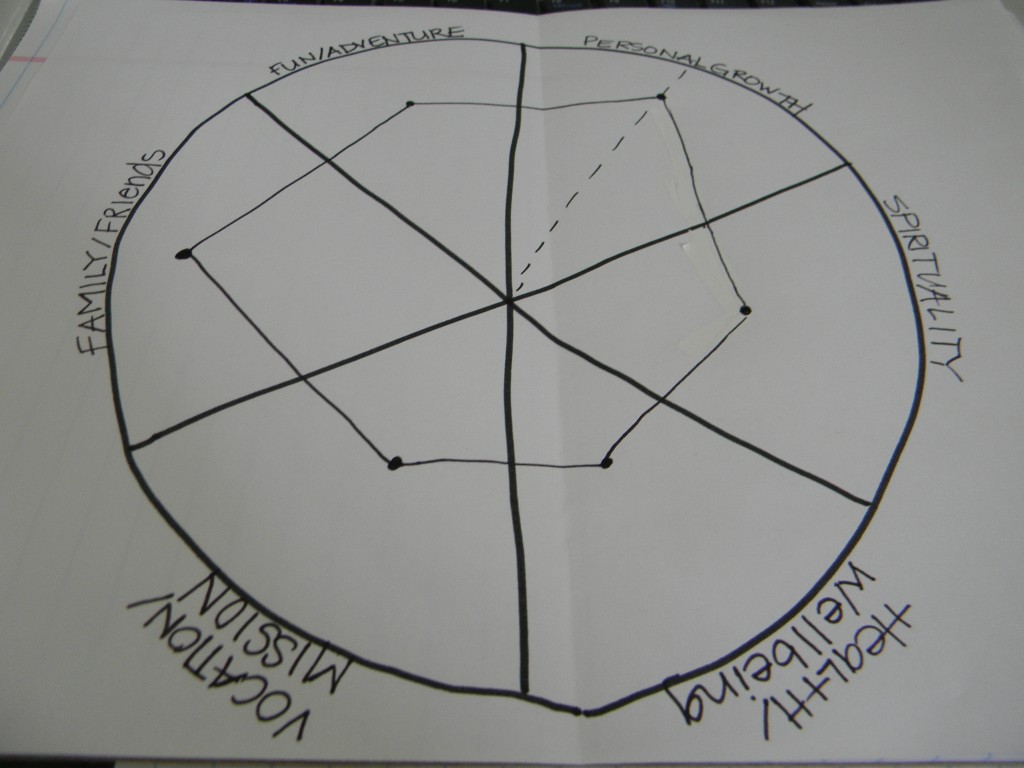
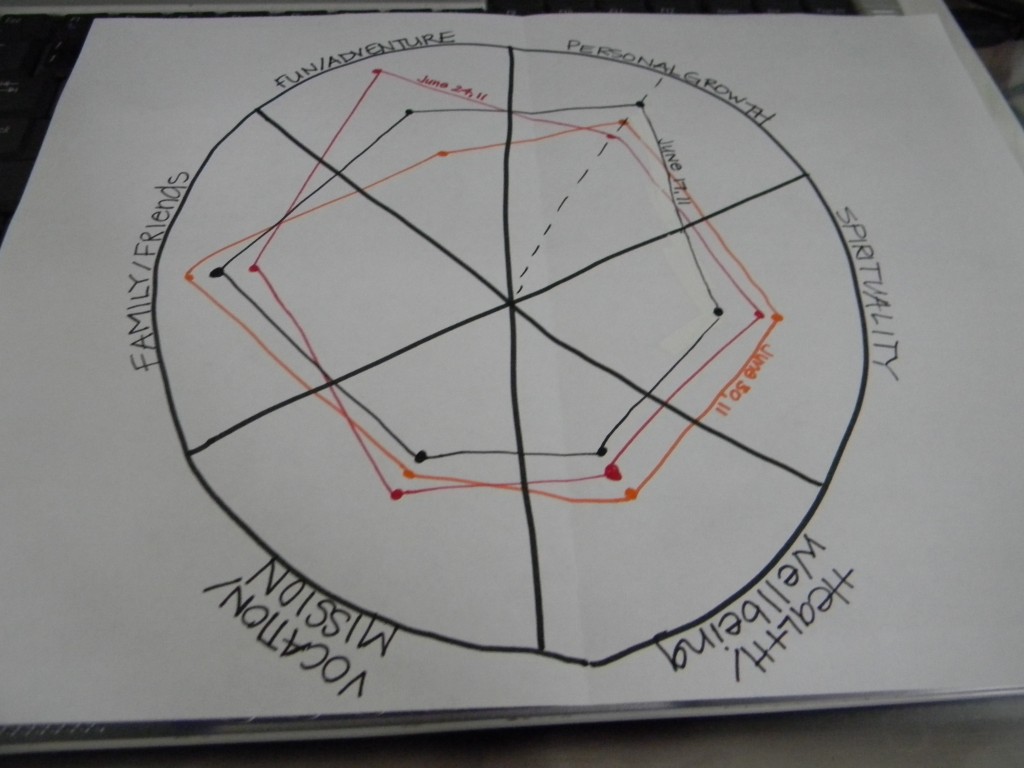
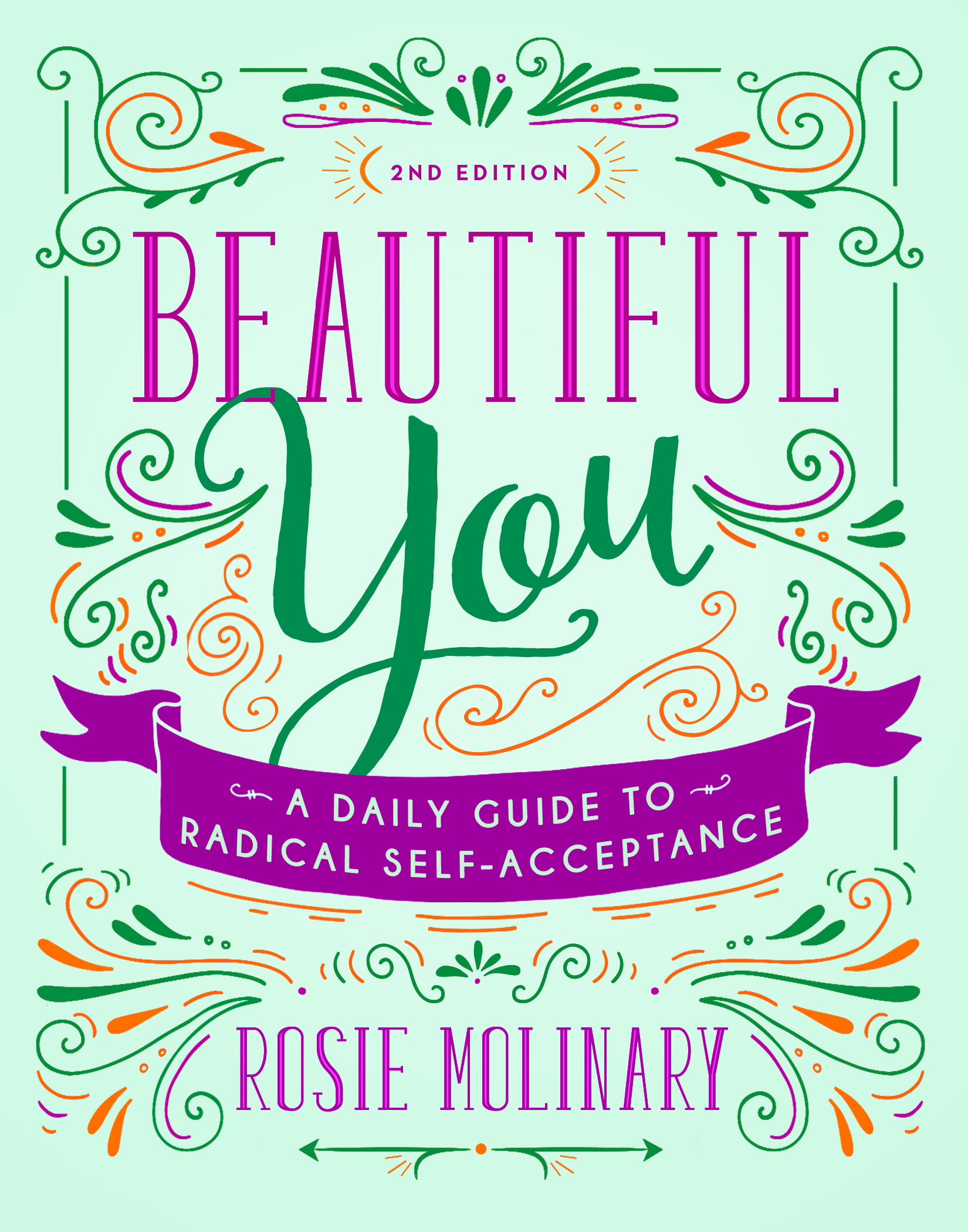

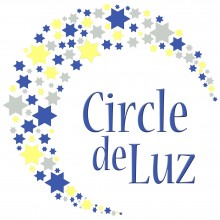
Thanks for this, Rosie! I’m so good at telling myself that, if one thing is lacking, everything is bad. You know? “I haven’t worked out in weeks; therefore, I am a real failure.” What a great visual to help me to remember that I always have a lot going on, and that, chances are, if I’m focusing less attention on one area, I’m amping it up in another. I like your point about being in the driver’s seat, though. That seems to be the kicker!
Thank you so much for sharing. It’s very inspirational.